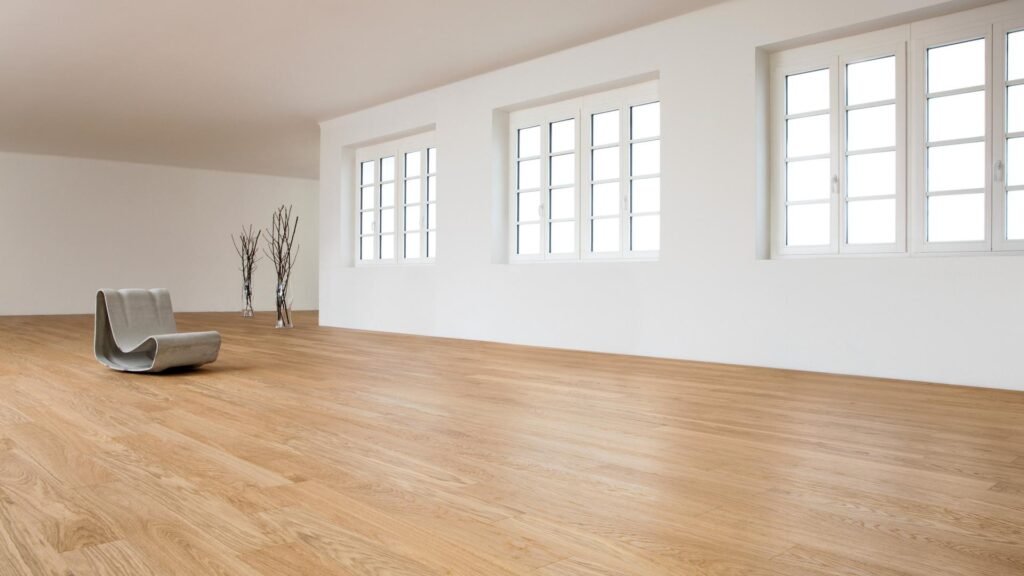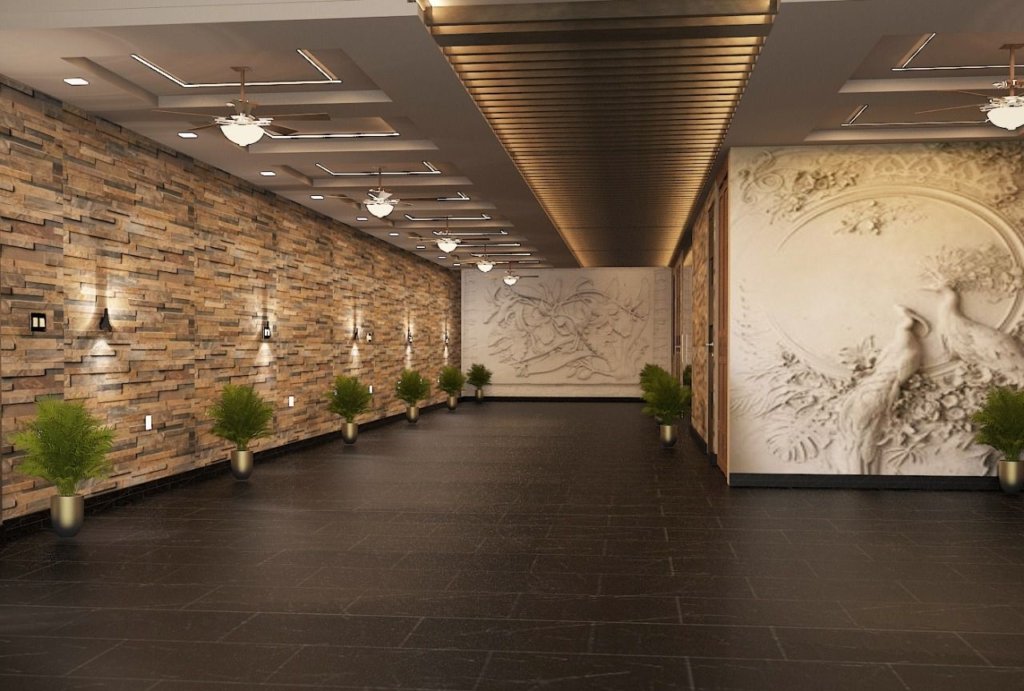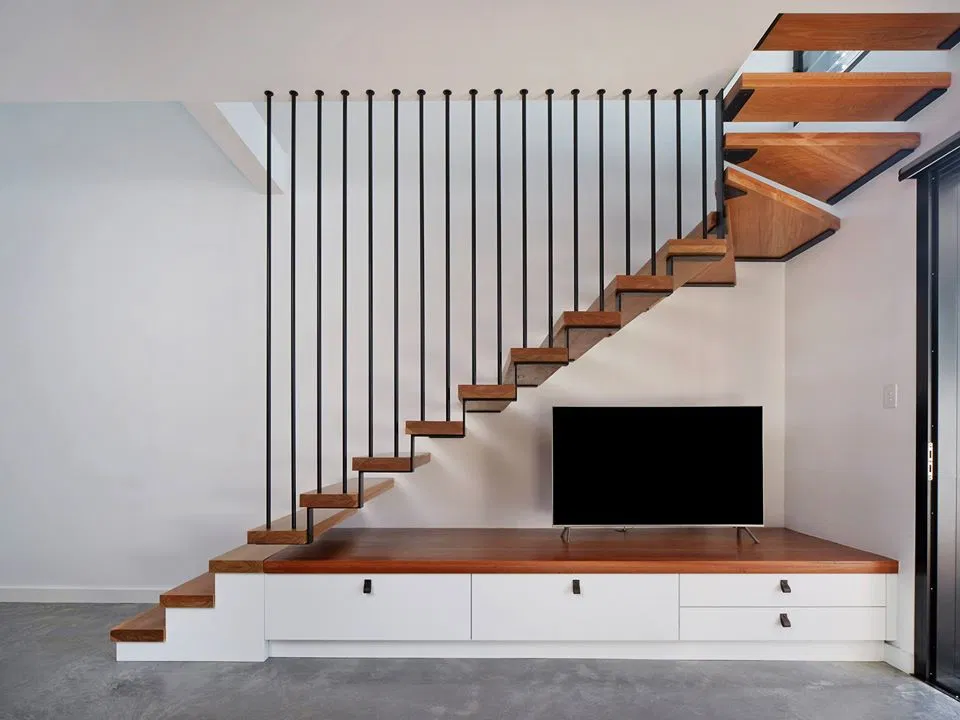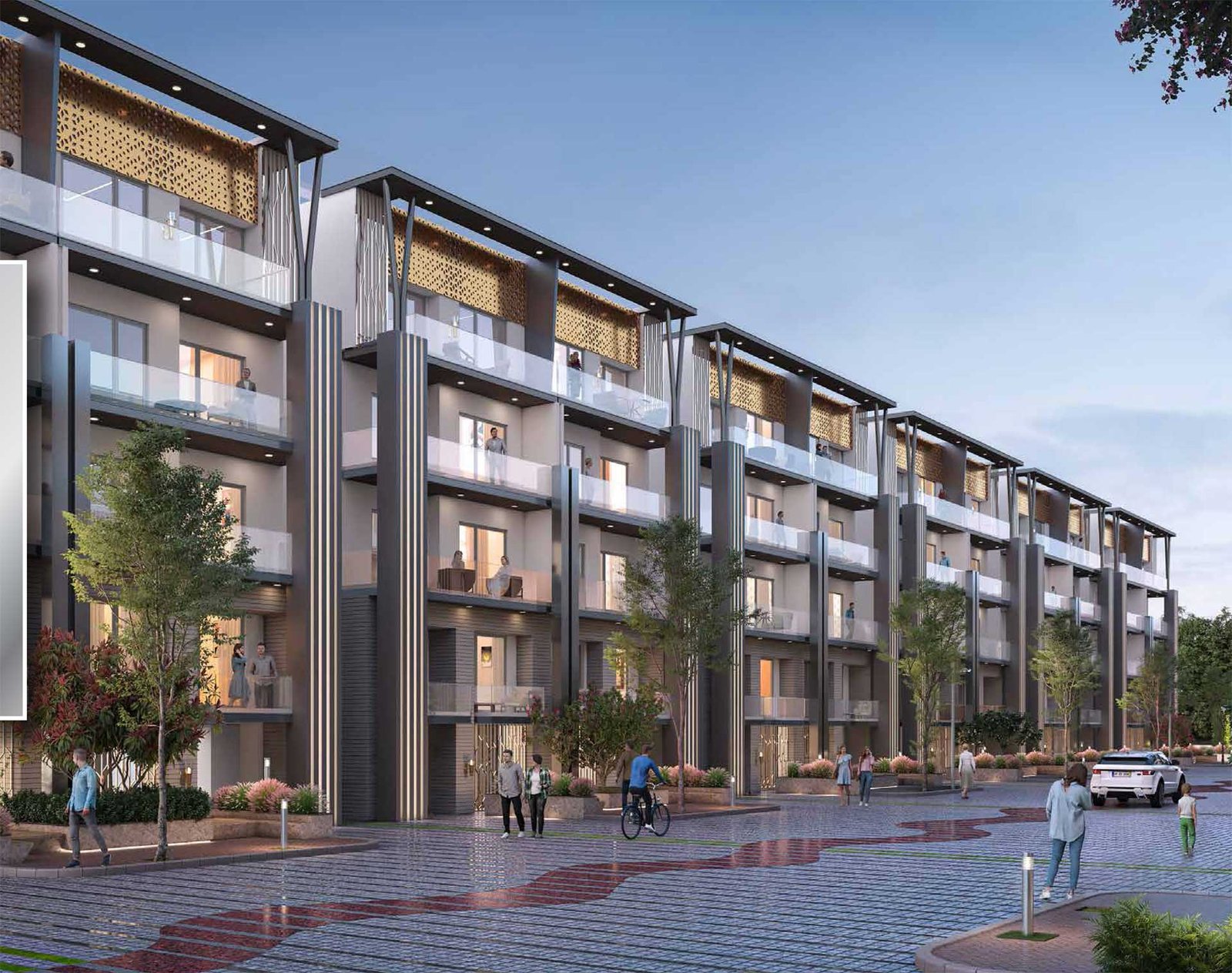Building a home is everyone’s dream. But that’s not as easy as it seems. Registration, permits, adhering to bye-laws of the state’s development authorities, inspections are extremely tedious processes. Especially the bye-laws, since it differs from state to state. But, going through the hundreds of pages long PDF can be extremely confusing for a common homeowner. That’s where Prithu Home comes into the picture. We help you demystify these confusing and tedious processes and give you your dream home. So, if you are thinking of building your house in Haryana, here is the simplified version of the Haryana Building Bye-Laws for 2021.But before we proceed, in this article we will cover:
Ground Coverage
FAR
Setbacks
Height
General Building Requirements
Stilt & Lift Lobby
Plinth
Bathroom & WC
Boundary Wall
Party Wall
Staircase
Passage & Corridors
Exits
Light & Ventilation
Cantilevered roof and chajja projections
Basement
Balcony
Rain Water Harvesting
Sustainable Building Materials
Zoning
Ground Coverage in Haryana

In common words, Ground Coverage means the built-up area covered by the building immediately above the ground level adjacent to the building. While calculating ground coverage under the shaft, chute, lift well, atrium, and staircase are counted. However, a ventilation shaft area of more than 3 square meters, fire staircase, and open courtyard of permitted size are not considered. In the recent amendments to the Haryana Building Code-2017, the Haryana government allows 85% coverage area for small plots that are between 60 and 150 square metres. On the other hand, the house owners, who own plots between 150 and 225 square metre in size, can cover 70% of the area as ground cover.
Floor Area Ratio (FAR) in Haryana
In simple words, FAR is the ratio between the total floor area of a building on all floors and the total area of the site. It decides how much construction can be carried out on a plot. To calculate the FAR, one can simply use the below formula.
FAR= Total covered area of all floors x 100 / Plot Area.
Alternatively, you can simply use our FAR calculator if you want to avoid too many calculations.
In the recent amendments to the Haryana Building Code-2017, the Haryana government allows FAR at 2.64 for small plots that are between 60 and 150 square metres. Earlier, this ratio was 1.98. Therefore, this increase in limit allows bigger construction.
Below is the permissible coverage for FAR as per the Town and Country Planning Department, Haryana:
| Plot Size / Category | Maximum Permissible Coverage for each floor | FAR | ||
| Existing |
|
Total | ||
| Upto 75sqm | 66 | 1.65 | 0.99 | 2.64 |
| Above 75 & upto 100sqm | 66 | 1.65 | 0.99 | 2.64 |
|
Above 100 & upto 150sqm |
66 | 1.45 | 1.19 | 2.64 |
|
Above 150 & upto 200sqm |
66 | 1.45 | 1.19 | 2.64 |
| Above 200 & upto 250sqm | 66 | 1.45 | 1.19 | 2.64 |
|
Above 250 & upto 350sqm |
60 | 1.25 | 1.15 | 2.40 |
|
Above 350 & upto 500sqm |
60 | 1.20 | 1.20 | 2.40 |
| Above 500sqm | 60 | 1.00 | 1.40 | 2.40 |
Exemption in Ground Coverage & FAR Calculation
Dimensions of the below areas are not counted while calculating the Ground Coverage and FAR.
Permitted roof projections
lift room
Mumty
balcony
basement or any floor if used for parking, services, and storage
Stilt area (unenclosed) proposed to be used for parking/ pedestrian plaza only
Open staircase (without Mumty)
Terrace with or without access, fire staircase
Atrium
Water tank
The open courtyard of permitted size shall not be counted towards FAR
Provided, an area under shaft, chutes, lift well, and staircase
From stilt to next floor shall be counted towards FAR only at once on ground floor
Provided in case the ventilation shaft area is more than 3 square metres, it shall not be counted in FAR
Setbacks in Haryana
Setbacks are the minimum open space required all around the building or a structure. It is decided by the development authority of the state how much distance should be maintained between the building and the plot’s boundary. Setbacks are required in the front, rear, and both sides of the building. According to Haryana Building Code, below are the minimum setbacks.
|
Sr. No. |
Area of plot (in square metres) |
Minimum Front Setback (in metres) |
Minimum Rear Setback (in metres) |
| 1. | Upto 60 square metres | 0.5 | 0.5 |
| 2. |
Above 60 to 150 square metres |
1.5 | 1.0 |
| 3. |
Above 150 to 225 square metres |
2.5 | 2.0 |
| 4. | Above 225 to 450 square metres | 3.0 | 3.0 |
| 5 | Above 450 square metres | 4.5 | 4.0 |
When calculating setbacks, it is important to remember the below points:
The front setbacks can be adjusted to achieve the permissible Ground Coverage, but in that case, rear setbacks must be fixed.
The setback area can be sunk for light, ventilation, and access to the basement, provided fire tender movement is not hindered.
All the walls of an open area or the common walls of an open area should be 230mm in size.
Height Exemption in Haryana
Height is the vertical measurement of a building measurement from the finished mean level of the street to the flat roof. In case the building is not situated on a street, it can be calculated from the highest level of the ground immediately adjacent to the building. However, while calculating the height of the building, the projected portions of mumties, flues, ducts, building maintenance unit, machine room minarets, water tank, and parapets that do not exceed 1.2 metre in height are not included. On average, a building’s height should be 15 metre including stilts.
General Building Requirements in Haryana
Apart from ground coverage, FAR, and height, many other aspects also must be checked while construction is being planned. These aspects include stilt and lift lobby, plinth, bathroom and WC, boundary wall, party wall, staircase, passage and corridors, exits, light and ventilation, cantilevered roof and chajja projections, basement, and balcony. Let’s discuss these ones one by one.
5.1. Stilt and Lift Lobby

Stilt is commonly used as the parking area under a building. It is the non-habitable portion in ground level consisting of structural columns with at least two sides open for the purpose of parking cars, scooters, cycles, or landscaping. Stilt clear height should be 2.45 meters from the finished floor to the beam bottom. However, it is not necessary, if the building has up to 3 floors.
On the other hand, the lift lobby is the space from which people directly enter the lift car(s) and into which people step out while exiting the lift car(s). The minimum size of the lift lobby should be 1.8 metres x 2.0 metres or more.
5.2. Plinth
The plinth is essentially the main support structure of a building. The building structure is built over this. Therefore, it is made of concrete. While building the plinth few things must be kept in mind:
Proper drainage of the site must be ensured
The height of the plinth must be no less than 450 mm and not more than 1.5 metres
The plinth of the courtyard must be at least 150 mm above the street level and must have a satisfactory drainage system.
Ramp or steps connecting the building plinth to the street must not obstruct traffic movement. But, if the building has a ramp or few steps starting from the plot boundary leading to the entry door, the minimum slope of such ramp should be 1:4 with a minimum width of 1 meter for pedestrian use and 3 metres for vehicle use.
5.3. Bathroom and Water Closet
As self-explanatory as the boundary wall is, it includes security devices such as spikes, barbed wire, razor wire, or electric fences affixed on top.
The maximum permissible height of the front-side boundary wall should be no more than 1.2 metres.
The rear and side walls must not be more than 1.8 metres from the mean level.
5.4. Boundary Wall
As self-explanatory as the boundary wall is, it includes security devices such as spikes, barbed wire, razor wire, or electric fences affixed on top.
The maximum permissible height of the front-side boundary wall should be not more than 1.2 metres.
The rear and side walls must not be more than 1.8 metres from the mean level.
5.5. Party Wall
If two houses are built too close to each other, they must be divided by a wall as a boundary. This wall is called the Party Wall. However it is important to note, in case a plot holder intends to construct a common boundary wall of a minimum of 230mm wide, he/she must take the written consent of owners of adjacent plots. It can be on any side, rear, or both sides.
However, if a plot holder opts for an independent boundary wall, the adjacent plots must be vacant. Or the owner must ensure his/her building’s foundation and boundary wall do not touch the adjoining plot.
5.6. Staircase

Every staircase should leave the headroom in the passage under the landing of 2.1 meters. Up to 14 risers are allowed in a single flight. In case it’s a spiral staircase, its width should not be less than 1 metre. The below table shows the permissible tread width, clear width, and height of the risers.
| Sl No. | Type of building | Minimum permissible clear width of staircase (in metres) | Minimum permissible width of tread (in metres) | Maximum permissible height of riser (in metres) |
| 1 | Residential plots up to 15 meters high | 0.9 | 0.25 | 0.19 |
| 2 | Residential plots More than 15 meters high | 1.2 | 0.25 | 0.19 |
5.7. Passage & Corridors
The dimension of passage and corridors are also set by the HUDA bye-laws. Minimum width of corridors and passages in a residential building set in Haryana building code 2020, 1.25 metres. It is also mandatory that corridors and passages are fire-resistant. The clear headroom height must be over 2.15 metres. Ideally, they should have natural lighting and ventilation.
5.8. Exits
It is of utmost importance that the width of any building is wide enough to evacuate easily during any emergency. In residential buildings, doorways should be more than 1 metre wide and in assembly and institutional buildings, it shall not be less than 2 metres. Exit doors should open outwards to avoid any movement obstruction. The exit door must not block the stairway or landing for more than 0.90 metre.
5.9. Light & Ventilation
For every house owner, having an abundance of natural lighting and ventilation is of utmost importance or at least should open to a wide balcony. The setback area can be sunk for light, ventilation, or access to the basement.
In case light and ventilation to habitable space areas are through an internal courtyard, the minimum dimensions of such a courtyard shall not be less than 3.0 m x 3.0 m for buildings below 15m in height unless mechanically ventilated.
The whole or part of one side of one or more rooms intended for human habitation and not abutting on either the front, rear, or side open spaces shall abut on an interior open space whose minimum width in all directions shall be 3 metres in case of buildings not more than 15 metres in height, unless it is mechanically ventilated.
The measurement of the ventilation shaft should follow the below guidelines:

5.10. Cantilevered Roof & Chajja Projections
Sun-shades over windows or balcony should be 0.23 metre wide if it is over any road/park/ public place.
Sun-shade should be made at a height of 2.3 metres from the ground level. It also must be 0.45 metre within the applicant’s own land, provided it does not exceed half of the width of setback/open space.
5.11. Basement
Below measurements and conditions decided in the Haryana building bye-laws must be met while constructing a residential or commercial building.
The minimum clear height of the basement shall be 2.4 metres.
Maximum clear height should be up to 4.75 metres from the floor to the underside of the ceiling.
The minimum height of the roof of the basement must be more than 0.45 metre and less than 1.5 metres for plots up to 1000 square metres.
For plots above 1000 square metres, the roof of the basement should be either flushed with the ground or it should be 1.5 metres above the average surrounding ground level.
Household or other goods made of non-combustible material or air-conditioning equipment and other machines used for services and utilities can be stored in the basement
If the basement is habitable then it needs to be cleared from the Haryana Fire Department and must be counted in FAR.
The clear distance in the basement from the adjacent property should be:
- a) 2.4 metres away from the adjacent building if it does not have an existing basement.
- b) Basement lines and the plotline can be attached if the adjacent building has a basement or if the plot is vacant.
5.12. Balcony

Balcony on the rear and front should be a maximum of 1.80 metres wide, provided the balcony doesn’t exceed half of the setback.
If the plot size is 300 square metres or above and side setback is also present, the balcony in such a building should be a maximum of 1 metre wide.
A mezzanine floor or internal balcony is permissible only if the room is at least 5 metres high. Such a mezzanine floor or balcony must not cover more than 50% of the room area. Also, it should be counted in FAR.
The clear height of the mezzanine floor or internal balcony should be made 2.3 metres high from the floor level.
Rain Water Harvesting in Haryana
In a state like Haryana that witnesses a longer dry season, it’s essential to harvest the rainwater as much as possible. That’s why HUDA emphasizes installing rainwater harvesting systems in every building. Buildings with roofs of at least 100 square metres or more should have rooftop rainwater harvesting systems. Its recharge well must be located at least 10 metres away from any structure that handles sewage or industrial wastewater.
On the other hand, recharging of groundwater is mandatory for all types of buildings, including Group Housing Societies having a plot area more than 500 square metres and above.
Sustainable Building Materials in Haryana
Usage of environment-friendly material while constructing a building should be important for all house owners or building owners. That’s why it’s important to use:
Panels, hollow slabs, hollow blocks to conserve materials and use less water
Fly Ash bricks, Portland Pozzolana cement, fly ash concrete, phosphor gypsum-based walling and roofing panels, particle wood, and industrial/agricultural by-products
Fly ash, AAC (Autoclaved Aerated Lightweight Concrete) panels, or CLC (Cellular Lightweight Concrete) panels that ensure thermal comfort for significantly reducing air-conditioners
Bamboos and rapidly growing plantation timbers for environmental benefits
Compressed soil earth block, rammed earth walls, and vaults also for environmental benefits.
We hope this article has helped you understand all the required aspects in simple words if you are planning to build your new home in Haryana. However, we understand it can be a tedious process. That’s why, we, Nstay Homes, are here to shoulder all your design, construction, and approval requirements. For us, your dream home is not just yours, it’s our dream as well.





